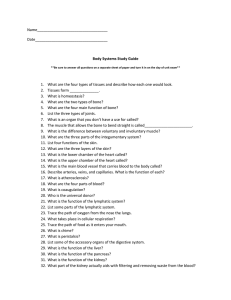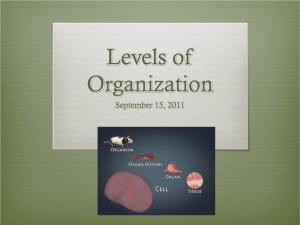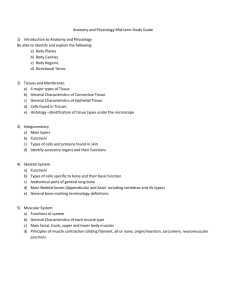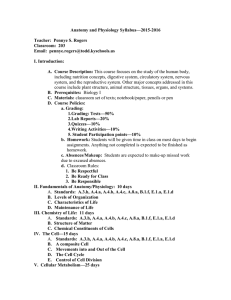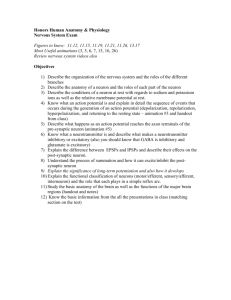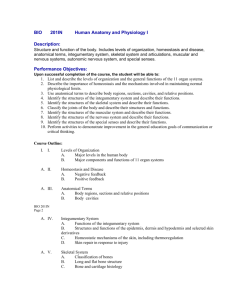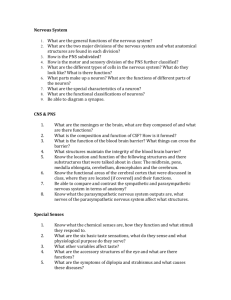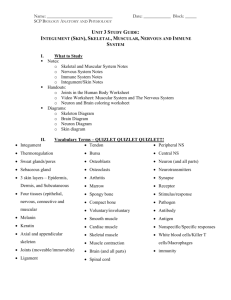Midterm Review Packet: Body Systems & Chemistry
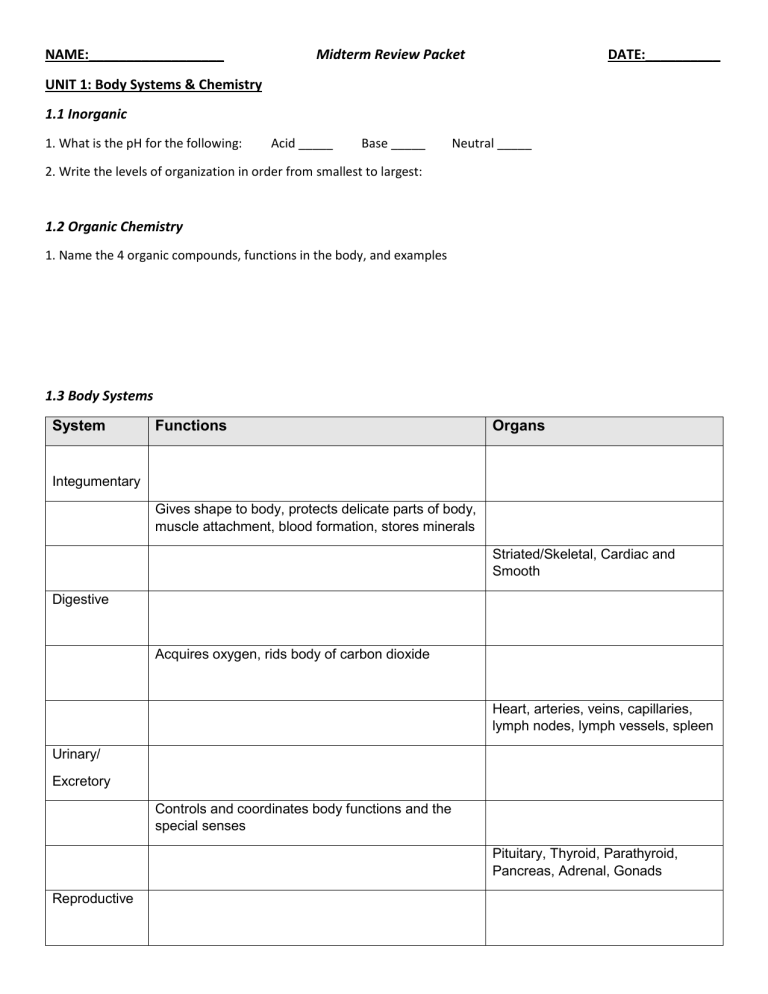
NAME:__________________
UNIT 1: Body Systems & Chemistry
Midterm Review Packet
1.1 Inorganic
1. What is the pH for the following: Acid _____ Base _____ Neutral _____
2. Write the levels of organization in order from smallest to largest:
1.2 Organic Chemistry
1. Name the 4 organic compounds, functions in the body, and examples
DATE:__________
1.3 Body Systems
System Functions
Integumentary
Gives shape to body, protects delicate parts of body, muscle attachment, blood formation, stores minerals
Organs
Striated/Skeletal, Cardiac and
Smooth
Digestive
Acquires oxygen, rids body of carbon dioxide
Heart, arteries, veins, capillaries, lymph nodes, lymph vessels, spleen
Urinary/
Excretory
Controls and coordinates body functions and the special senses
Reproductive
Pituitary, Thyroid, Parathyroid,
Pancreas, Adrenal, Gonads
1.4 Anatomical Terminology
1. What is the difference between anatomy and physiology?
2. Describe how the body appears in the anatomical position:
3. Use the following terms to describe the human in anatomical position:
Superior
Inferior
Anterior
Posterior
Medial
Lateral
Proximal
Distal
Superficial
Deep
UNIT 2: Cells & Tissues
2.1 Cell Structures & Organelles
1. What are the main organelles of the cell and their functions? (nucleus, cytoplasm, Golgi apparatus, mitochondria, ribosomes, plasma membrane)
2. What are the main differences between active and passive transport?
2.2/2.3 Importance of Tissues & Tissue Types
1. List the four types of tissues and describe their general function and location.
2. List the three types of muscles tissue and know where they are found. Which ones are voluntary and which ones are involuntary?
UNIT 3: Nervous System
3.1 Structure of a Neuron
Define the following neuron structures
Axon:
Label the neuron parts on the diagram
Dendrite:
Cell body:
Myelin sheath:
Node of Ranvier:
3.2 Action Potential
1. Describe what is happening in each step of the following action potential image:
1 2 3
3.3 Principles of Nerve Impulses & Synapses
1. List examples of neurotransmitters & their general purpose
4.
5.
6.
Describe what is happening in each of the steps in the picture:
1.
2.
3.
3.4 Nervous System Anatomy
Fill in the Graphic Organizer with appropriate labels and descriptions
The Nervous System
1.
Describe what is shown in the picture to the left. How does this image show the difference between reflexes and typical body reactions to stimuli?
3.5 Autonomic Nervous System
1.
Describe the difference between sympathetic and parasympathetic division.
3.6 Brain Regions
Match the letters with the 4 lobes and cerebellum, then give the function of each
Match each word below with a number on the diagram then give the function of each structure
____Cerebral Cortex:
____Thalamus:
____Corpus Callosum:
____Hypothalamus:
____Hippocampus:
____Pituitary Gland:
____Midbrain:
____Pons:
____Medulla:
____Brain Stem:
____Spinal Cord:
____Cerebellum:
2.
3.
4.
5.
UNIT 4: Skeletal & Muscular System
4.1 Skeletal Structure
Label the parts of the skeleton in the image to the right.
Word Bank: carpals, clavicle, femur, fibula, humerus, metacarpals, metatarsals, phalanges, patella, radius, ribs, scapula, tarsals, tibia, ulna, skull, mandible, lower vertebrae, sacrum, pelvis, sternum, coccyx
4.2 Joints
Describe all 6 synovial joints in your own words:
1.
6.
4.3 Bone Anatomy
Label the bone using the following:
Epiphysis, Diaphysis, spongy bone, compact bone, epiphyseal line, medullary cavity,
